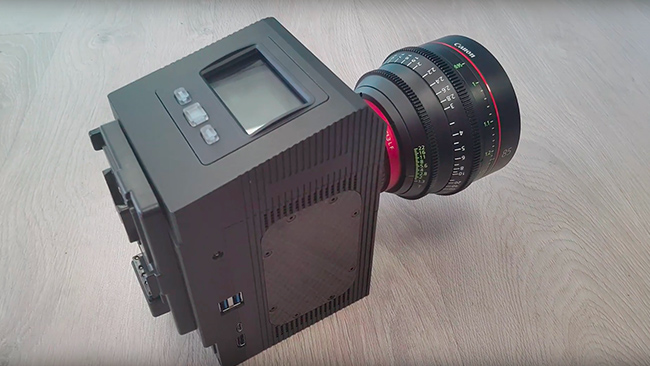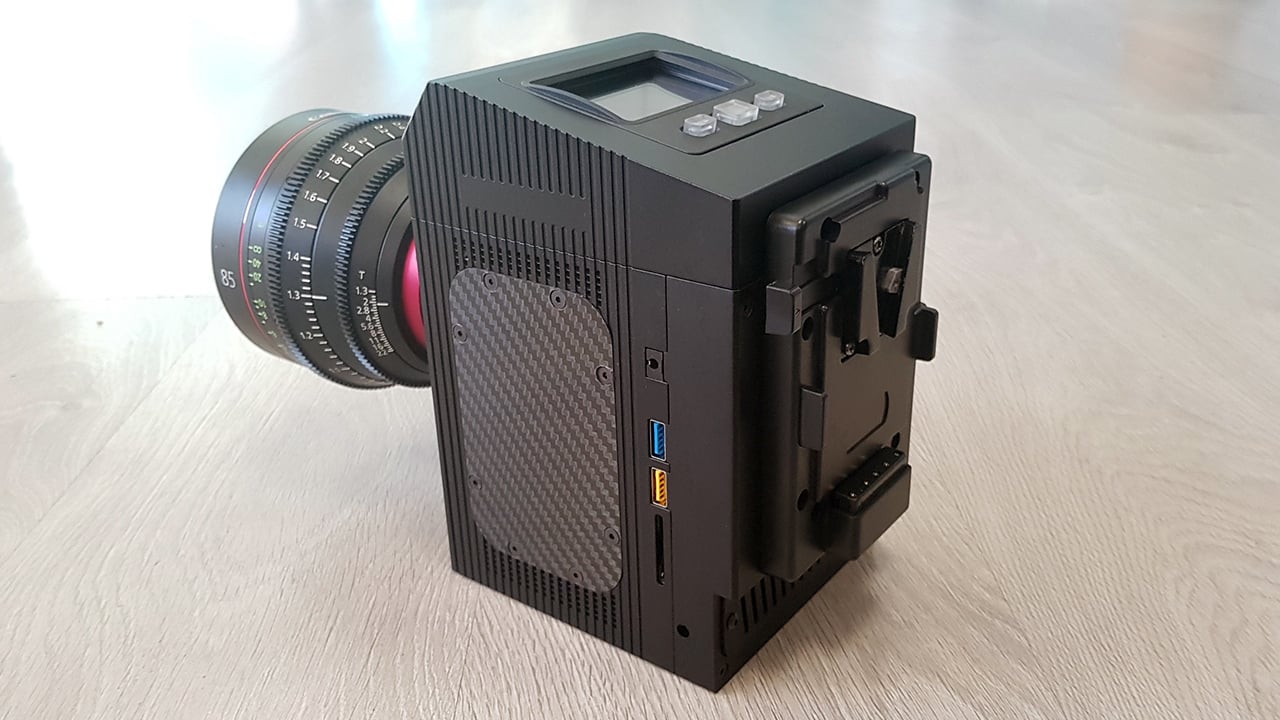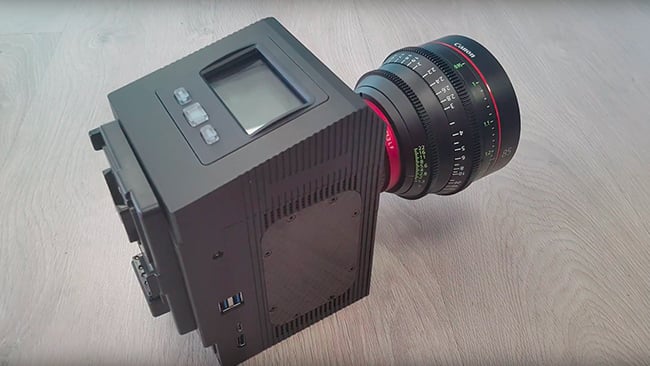

Cinemartin's 8K Fran camera can now be confirmed as a very real thing. No longer vapourware, the company has released new images of the camera along with some sample video.
Back in May, Cinemartin announced their 8K Fran camera to much interest but also some caution. The company has produced some interesting and useful devices in the past, particularly monitors like the high-brightness Eclipse. The 5.67” Loyal monitor was probably the most affordable waveform available at the time of its release.
However, Fran is the company's first camera, which means that it will inevitably be the target of a lot of scrutiny.
New information
We can now answer a few questions that weren't addressed in earlier information. The sensor is larger, or at least taller than VistaVision. At 37 by 27mm, the sensor is around 4:3 in aspect ratio, though of course, much larger than a 35mm Academy frame. This raises the interesting possibility of shooting with something like Servicevision's Scorpio full-frame anamorphics or the Hawk 65mm range. Not all lenses will cover a sensor that big, of course; most won't, but cameras now have so much excess resolution that it's completely reasonable to choose an appropriate sensor area based on other factors.
There's also global shutter, internal downsampling so that the sensor area can, to at least some extent, vary independently of output resolution. Frame rates up to 48fps at 4K raw are available, with the maximum 7920 by 6024 resolution available at 24fps. Projected improvements for next year have been increased to include higher frame rates, up to 96fps at 4K, which is a very useful boost. Recording is to certified M.2 NVMe devices and there are both Thunderbolt and USB3 connections for external storage. Power consumption floats between 25 and 60 watts, depending on the work being done, which compares well with other full-frame cameras. The power consumption of some is becoming so high that it creates real challenges for certain kinds of production, and 25 watts idle is a welcome relief.

It's real
Those details are encouraging, but perhaps most significantly, there are now pictures of an actual finished piece of hardware, plus more detailed information on recording and workflow. This at least demonstrates the camera's existence as a working prototype, though mechanically, there's not much to talk about. That's not a criticism; like a lot of modern cameras, Fran is a box with a lens mount on the front and a battery mount on the back. Some people don't like the need to rig cameras extensively to make them usable, particularly for high-octane documentary work, but that downside is greatly balanced by the flexibility, particularly in a world where drones exist. Much of the I/O is in expansion modules that don't exist yet, meaning that SDI output and XLR audio connectivity is yet to come. The M.2 storage goes in the back, under the battery.
So, physically, it's fairly conventional. Perhaps the basic box has already become a de facto standard for this sort of camera, which would be fine. Either way, the usability of something like this is hugely dependent on the workflow, and this is an area where Fran has a few interesting options. It seems mainly intended to shoot raw in either the conventional Bayer patterned format of untouched sensor data or in a format Cinemartin calls “Debayered raw.” Naturally, either of these options chews through storage at an alarming rate, with the larger frame sizes exceeding 600MB/s even at conventional frame rates.
Cinec transcoding
Cinemartin has been shipping the Cinec transcoding tool for some time, so they're well placed to match the Fran camera with capable post-processing software. Cinec will already produce all the common formats and the company suggests that the Cinec-based Franenc software will perform at least some conversions in real-time on a Nvidia-based Windows workstation. Unusually, the camera itself can also offload to Thunderbolt or USB drives or transcode as an offline task, with formats including ProRes and DNxHD at resolutions up to 4K. This suggests as we suspected before, that the Fran camera is very much based on a general-purpose computer which might be able to do all kinds of things in the future.
As to the pictures, we'll reserve a qualitative judgement until we have a camera to test, although the still frames released so far do show the detail of an 8K frame. Frames this big put the filmmaker in the enviable position of having resolution to burn. There are some rather noticeable demosaicing artefacts in at least one of the 1:1 crop images which have been shown, and we can only hope this is the result of an early version of the software. Otherwise, we don't really have enough information to make an objective assessment. Cinemartin has discussed their intention to invite some filmmakers to Barcelona to shoot with the camera, at which point there should be more material available to assess; in the meantime, it seems only fair to wish this new camera the best.
Tags: Production


Comments